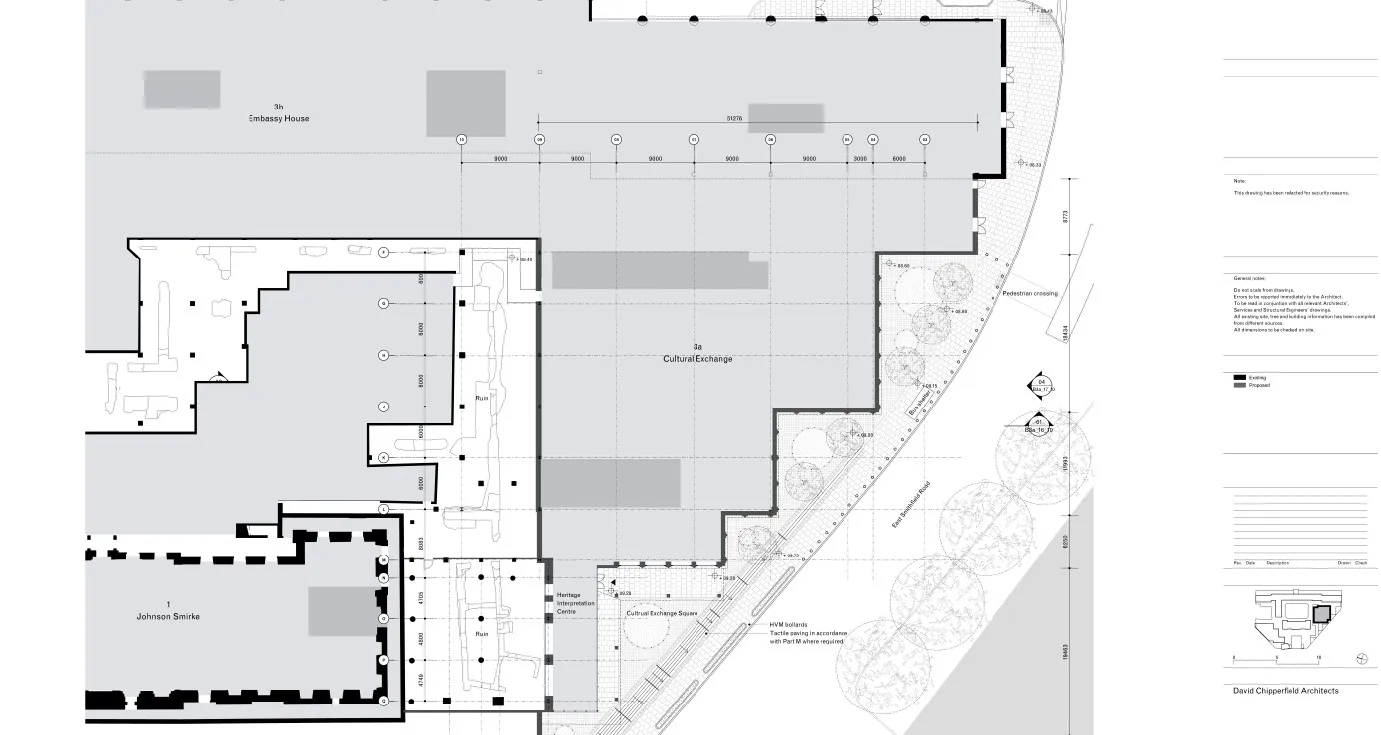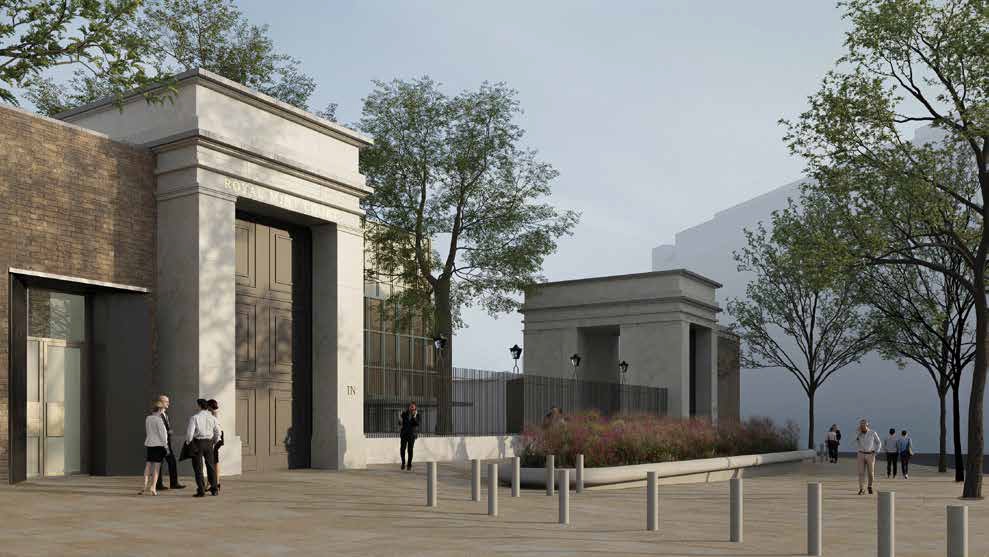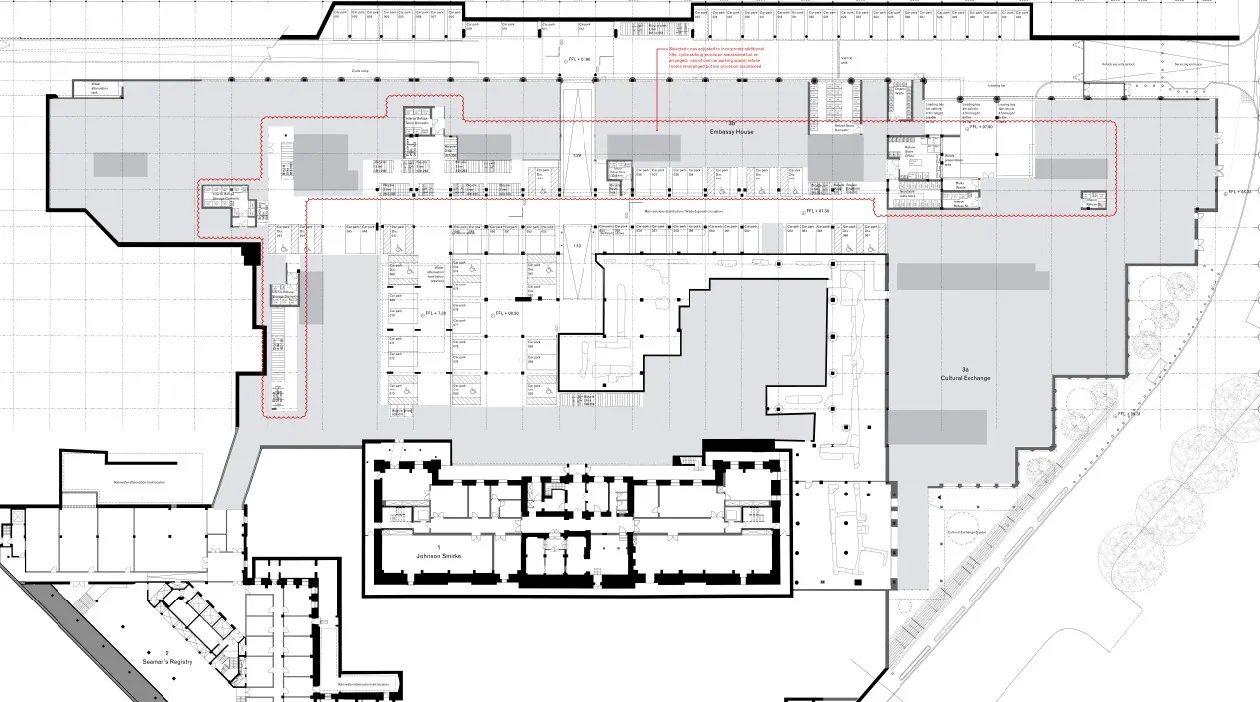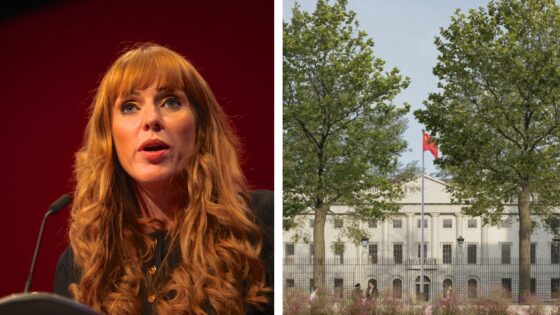In a letter sent on Wednesday (6 August), Rayner asked the Chinese UK embassy to supply further information by 20 August on its proposals to turn the former Royal Mint into Europe’s biggest diplomatic campus.
Rayner, who is due to rule by 9 September on whether the scheme can go ahead, has asked China to explain ‘blanked out’ sections of the Chipperfield-designed scheme, which have been ‘redacted for security reasons’, the BBC reported.
Her letter referred to drawings for the planned Cultural Exchange Building and Embassy House, which have been ‘greyed out’ in plans seen by the AJ. The Guardian reported that Rayner asked China to ‘consider whether to provide unredacted versions’ of the drawings so that the public knew what permission was being granted for.
The letter also reminds China of requests made by home secretary Yvette Cooper and foreign secretary David Lammy for a ‘hard perimeter’ around the embassy to solve concerns over public safety. However, this could involve submitting amended plans.
In January, the two secretaries of state signalled cautious support for the proposals on the basis that China introduced the hard perimeter to the embassy and removed unrestricted public access to the proposed cultural centre.
As it stands, diplomatic inviolability would mean that emergency services needed permission from the Chinese ambassador to access the small, paved forecourt and the pavilion, in the circumstances, for instance, of a health issue with a member of the public visiting the centre.
But China has not signalled that it will amend its plans. Christopher Katkowski, representing the Chinese government at the planning inquiry into the scheme in February, told the inquiry that his client had ‘no desire or intention to change the scheme in the way in which it has been suggested’.

David Chipperfield Architects planning documents for China embassy
Following the public inquiry, the planning inspectorate is understood to have recommended approval of the planned overhaul of the listed 2.4ha former Royal Mint, which is adjacent to the Tower of London UNESCO World Heritage Site.
The AJ understands that Rayner has now received the planning inspectorate’s final report and recommendation on the DCA-designed proposals for the 2.4ha embassy. In June, The Sunday Times reported that Rayner was tipped to approve the scheme based on that recommendation.
China’s scheme has already been rejected twice by the local planning authority, Tower Hamlets Council.
Local councillors, human rights groups and Hong Kong democracy activists have previously raised concerns over the scheme, in view of the country’s alleged mistreatment of Uighur Muslims. Tower Hamlets has the largest Muslim population of any local authority in England and Wales, at 39.9 per cent.

David Chipperfield Architects’ plans to rework the Royal Mint into a new complex for the Chinese Embassy (as submitted June 2021) – view of new entrance pavilion
Rayner called in the scheme in October 2024. Shortly after, the Chipperfield-designed proposal became the centre of a diplomatic spat. Reports emerged of a political tit-for-tat between London and Beijing over plans for new UK embassy buildings in China, including one designed by Eric Parry Architects, believed to have been put on hold by China.
David Chipperfield himself has previously been criticised for accepting the contentious commission (Is the new Chinese embassy Chipperfield’s most controversial job?).
The US congressional committee on China has also criticised the proposals on security grounds and, earlier this year, wrote on X: ‘The PRC’s mega-embassy in the UK raises significant security concerns: from interference and surveillance to risks for sensitive infrastructure like London’s financial services. We must work to urgently address this issue and work with our allies to protect national security.’

David Chipperfield Architects’ proposed cultural centre for a new China embassy
Chipperfield’s scheme would refurbish the Grade II*-listed Johnson Smirke Building at the centre of the former Royal Mint site to create embassy space. A public square would be created in front of it, behind the site’s gated entrance.
The project also includes the restoration and revamp of the Grade II-listed Seaman’s Register, which was remodelled by RMJM in the 1980s. It would create a new Embassy House by splitting up and remodelling the conjoined, Sheppard Robson-designed Murray and Dexter House.
The longer building, Dexter House, would contain flats for embassy staff. The building’s façade would be reconfigured to provide a ‘calmer and more unified’ backdrop to the surrounding listed buildings. Meanwhile, Murray House would be repurposed into a new seven-storey Cultural Exchange building, clad in green ceramic.
A UK government spokesperson previously said: ‘National security is the first duty of government. It has been our core priority throughout this process.

David Chipperfield Architects planning documents for China embassy
‘That is why the Foreign, Commonwealth and Development Office and the Home Office submitted written representations to reflect these considerations and to note the importance of all states having functioning diplomatic premises in each other’s capitals.’
It said Rayner would make a final decision on the case ‘in her independent, quasi-judicial role’ in due course.
The Chinese Embassy said the original reasons for refusal by Tower Hamlets in December 2022 were ‘without merit and have no basis in planning policy’.
The Chinese embassy was approached for comment.
